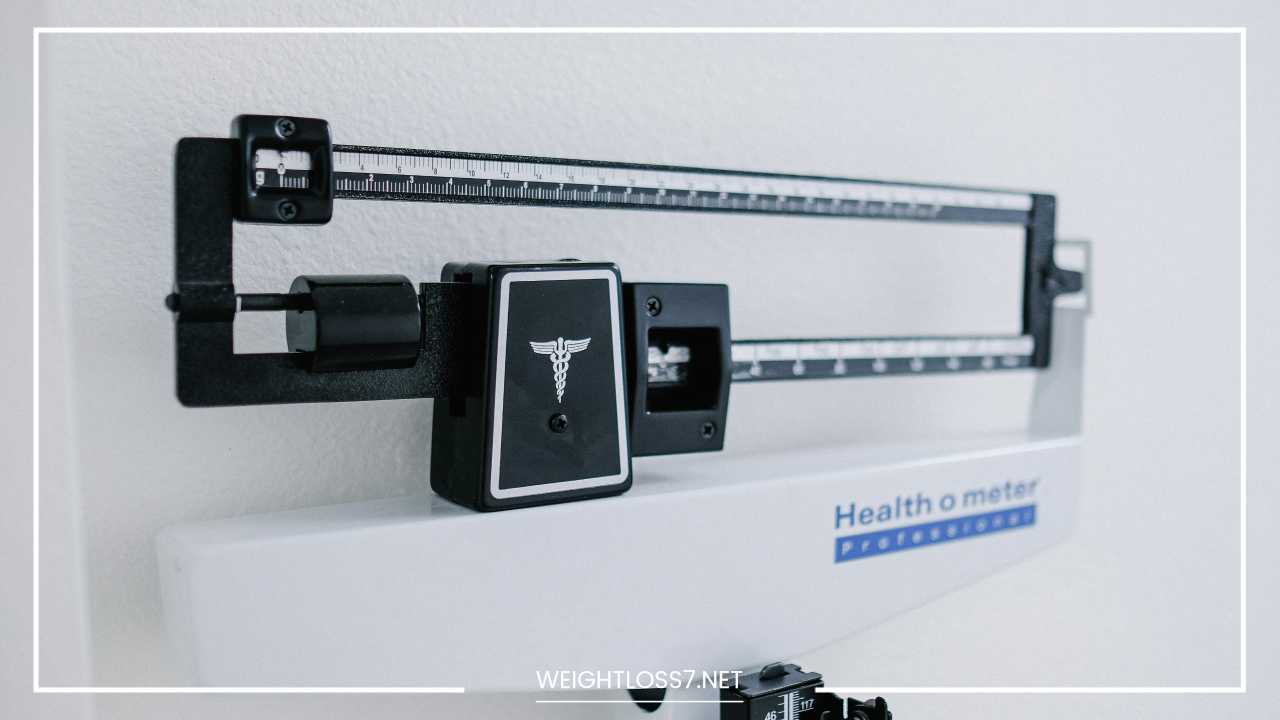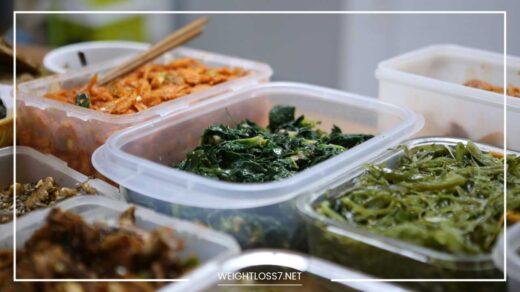Sustainable Weight Loss Plan: Reach Your Goals Without Fad Diets

Weight Loss Plan
Shedding Pounds for a Healthier You: A Sustainable Weight Loss Plan
Living in a world obsessed with quick fixes, it’s easy to get lured by fad diets and unrealistic weight loss promises. But sustainable weight loss is a marathon, not a sprint. It’s about adopting healthy habits you can weave into the fabric of your life, not just a crash course in deprivation.
This comprehensive guide will equip you with the tools and knowledge to craft your personalized weight loss plan, one that nourishes your body, fuels your well-being, and empowers you to achieve your goals.
Setting SMART Goals for Success
The foundation for any successful weight loss journey is setting SMART goals. Here’s what that acronym stands for:
- Specific: Instead of a vague goal like “get healthier,” define what “healthier” means for you. Do you want to increase your energy levels, improve your sleep quality, or fit into your favorite pair of jeans again?
- Measurable: Track your progress to stay motivated. This can involve monitoring your weight on a scale (focusing on trends over daily fluctuations), measuring key body parts, or using fitness trackers to monitor activity levels.
- Attainable: Don’t set yourself up for failure with unrealistic goals. Aim to lose 1-2 pounds per week, a safe and sustainable target that allows your body to adjust gradually.
- Relevant: Make sure your goals align with your overall health and well-being. Don’t chase a number on the scale if it compromises your mental or physical health.
- Time-Bound: Set a realistic timeframe for achieving your goals. This could be a specific date or a designated number of weeks/months.
Diet: Your Body’s Powerhouse
Food is not the enemy; it’s the fuel that energizes your body and mind. Here are some key dietary principles to embrace for sustainable weight loss:
- Make Fruits, Vegetables, and Whole Grains Your Cornerstones: Fill your plate with a vibrant rainbow of fruits and vegetables. They are nature’s powerhouses, packed with essential vitamins, minerals, and fiber. Fiber keeps you feeling fuller for longer, aiding in weight management. Whole grains, like brown rice, quinoa, and whole-wheat bread, provide sustained energy and regulate blood sugar levels, preventing energy crashes and unhealthy cravings.
- Embrace Lean Protein: Include lean protein sources like skinless chicken breast, fish, beans, lentils, and tofu in your meals. Protein plays a crucial role in building and maintaining muscle mass, which boosts your metabolism and helps you burn more calories throughout the day.
- Don’t Fear Healthy Fats: Contrary to popular belief, healthy fats are essential for a balanced diet. Include avocados, nuts, seeds, and olive oil in your meals. These fats promote satiety, improve heart health, and aid in the absorption of certain vitamins.
- Outsmart Added Sugars and Processed Foods: Added sugars and processed foods are loaded with empty calories and offer minimal nutritional value. Processed foods are often engineered to be hyper-palatable, triggering cravings and overeating. Opt for natural sweeteners like fruits and limit sugary drinks, candies, and processed snacks.
- Portion Control is Key: Our eyes are often bigger than our stomachs. Use smaller plates to create a feeling of abundance and practice mindful eating. Measure out servings or use portion control containers to avoid overeating.
- Stay Hydrated: Water is crucial for overall health and can also be a valuable tool in weight management. Drinking plenty of water throughout the day helps you feel full, reduces cravings, and flushes out toxins. Aim for eight glasses of water daily, adjusting based on your activity level and climate.
Planning and Preparing Meals: Your Recipe for Success
Planning your meals ahead of time sets you up for success. Here are some tips to streamline your meal prep process:
- Embrace Meal Prepping: Dedicate a specific time each week to prepping your meals and snacks. This saves valuable time during busy days and ensures you have healthy options readily available. Prepare pre-chopped vegetables, cook protein in bulk, and portion out snacks to avoid unhealthy temptations.
- Become a Kitchen Maestro: Cooking more meals at home allows you to control ingredients, portion sizes, and cooking methods. Experiment with healthy recipes that are both delicious and nutritious. Explore different cuisines and cooking styles to keep things interesting. There’s a whole world of healthy and flavorful food waiting to be discovered!
Finding Joy in Movement: Your Celebration of Fitness
Exercise shouldn’t be a chore; it’s a celebration of your body’s incredible ability to move. Find activities you genuinely enjoy, whether it’s a brisk walk in nature, a heart-pumping Zumba class, a refreshing swim, or a challenging bike ride.
- Start Gradually: If you’re new to exercise, begin with short, manageable workouts and gradually increase the duration and intensity as your fitness improves. Start with 15-minute sessions and gradually build up to the recommended 150 minutes of moderate-intensity exercise per week.
- Variety is the Spice of Life: Don’t get stuck in a rut! Incorporate a variety of activities into your routine to keep things interesting and challenge different muscle groups. Try a dance class one day, go for a hike the next, and hit the pool for a refreshing swim on another.
- Find a Workout Buddy: Having a workout partner can increase motivation and accountability. Schedule workouts with a friend or family member, or join a group fitness class to create a sense of community and support.
- Embrace Strength Training: Strength training is often overlooked but plays a vital role in weight loss and overall health. Building muscle mass boosts your metabolism, helping you burn more calories even at rest. Aim for strength training exercises that target all major muscle groups 2-3 times a week. You can use bodyweight exercises, free weights, or resistance bands.
Mind-Body Connection: Taming the Emotional Eater
Our emotions can often influence our eating habits. Here’s how to manage emotional eating and develop a healthier relationship with food:
- Identify Your Triggers: Recognize situations or emotions that trigger unhealthy eating habits. Maybe it’s stress, boredom, or sadness. Keep a food journal to track your eating patterns and identify emotional triggers.
- Develop Coping Mechanisms: Equip yourself with healthy coping mechanisms to deal with your triggers. Practice relaxation techniques like meditation or deep breathing exercises to manage stress. Engage in activities you enjoy, like reading, spending time in nature, or listening to calming music, to combat boredom.
- Practice Mindful Eating: Pay close attention to your body’s hunger and fullness cues. Eat slowly, savor your food, and avoid distractions like watching TV or scrolling through your phone while eating. This allows you to register feelings of satiety and stop eating when you’re comfortably full, not stuffed.
Building Sustainable Habits for Lasting Change
Sustainable weight loss is about creating healthy habits you can stick with for the long term. Here are some tips to cultivate lasting change:
- Make Gradual Changes: Don’t try to overhaul your entire lifestyle overnight. Start with small, achievable changes, like swapping sugary drinks for water or incorporating a daily walk into your routine. As you master these changes, gradually add more healthy habits to your repertoire.
- Find What Works for You: There’s no one-size-fits-all approach to weight loss. Experiment with different dietary patterns, like the Mediterranean diet or a plant-based approach, and find what best suits your preferences and lifestyle.
- Don’t Deprive Yourself: Deprivation often leads to cravings and binge eating. Allow yourself occasional treats in moderation. This prevents feelings of restriction and fosters a healthy relationship with food.
- Celebrate Non-Scale Victories: Focus on celebrating your non-scale victories alongside any weight loss you achieve. This could be increased energy levels, improved sleep quality, better fitting clothes, or simply feeling stronger and more confident.
- Find Support: Having a support system can make a world of difference. Talk to your doctor or a registered dietitian for personalized guidance. Consider joining a weight loss support group or finding an accountability partner to share your journey with.
Remember: Weight loss is a journey, not a destination. There will be setbacks and challenges along the way. The key is to be kind to yourself, learn from your experiences, and recommit to your goals. With dedication, consistency, and the right approach, you can achieve sustainable weight loss and create a healthier, happier you.
Additional Tips:
- Get Enough Sleep: Aim for 7-8 hours of quality sleep each night. Sleep deprivation can disrupt hormones that regulate appetite and metabolism, leading to increased cravings and weight gain.
- Manage Stress: Chronic stress can elevate cortisol levels, a hormone that promotes fat storage. Practice stress-management techniques like yoga, meditation, or deep breathing to keep stress levels in check.
- Read Food Labels: Become a savvy food label reader. Pay attention to serving sizes, calorie counts, and sugar content. Opt for whole, unprocessed foods whenever possible.
Embrace a Holistic Approach
Sustainable weight loss is not just about diet and exercise; it’s about creating a healthy lifestyle. Focus on making small, sustainable changes that improve your overall well-being. Remember, true health encompasses physical, mental, and emotional well-being. By nourishing your body with healthy foods, moving your body in ways you enjoy, and prioritizing self-care, you’ll be well on your way to achieving lasting weight loss and a healthier, happier you.
Sample Meal Plan:
This is just a sample to provide some inspiration. Be sure to adjust it based on your preferences and dietary needs.
- Breakfast: Greek yogurt with berries and a sprinkle of granola, or scrambled eggs with whole-wheat toast and avocado.
- Lunch: A colorful salad with grilled chicken or fish, quinoa, and a light vinaigrette dressing, or a lentil soup with a whole-wheat roll.
- Dinner: Salmon with roasted vegetables and brown rice, or turkey chili with a side salad.
- Snacks: Fruits with nut butter, sliced vegetables with hummus, or a handful of mixed nuts and seeds.
Remember, this is just a starting point. Feel free to explore different healthy recipes and find what works best for you!
Final Word
Sustainable weight loss is a journey of self-discovery and empowerment. It’s about learning to listen to your body, honoring your needs, and developing healthy habits that nurture you from the inside out.
This guide has equipped you with the tools and knowledge to craft your personalized weight loss plan. Remember, there’s no single right way to do this. Be patient with yourself, celebrate your victories, and embrace the journey towards a healthier, happier you!
Additional Resources:
- The National Institutes of Health (https://www.nih.gov/)
- The American Heart Association (https://www.heart.org/)
- The Academy of Nutrition and Dietetics (https://www.eatright.org/)
- https://www.cdc.gov/healthyweight/losing_weight/index.html
By incorporating these resources and the tips outlined in this guide, you can empower yourself to achieve your weight loss goals and create a healthier, more fulfilling life.

















